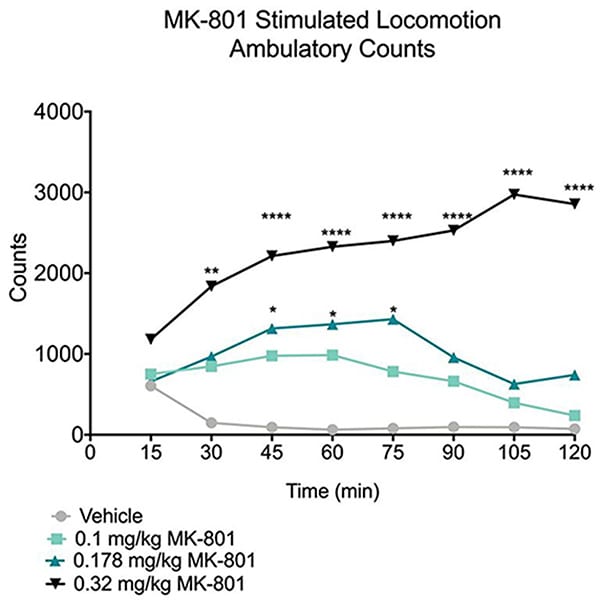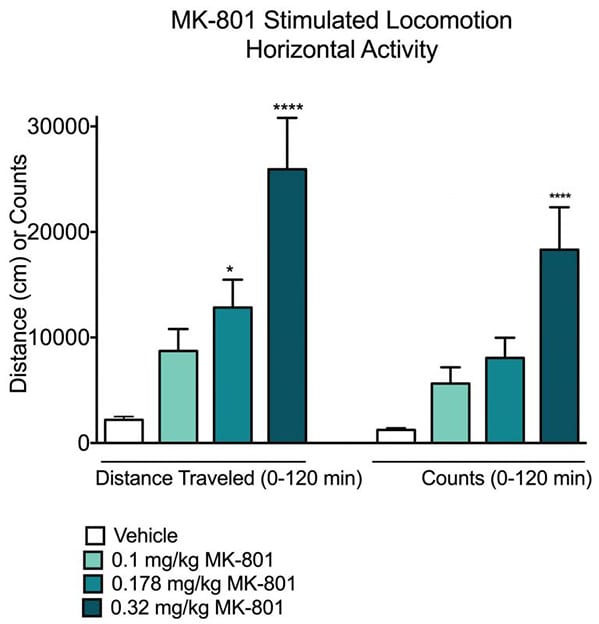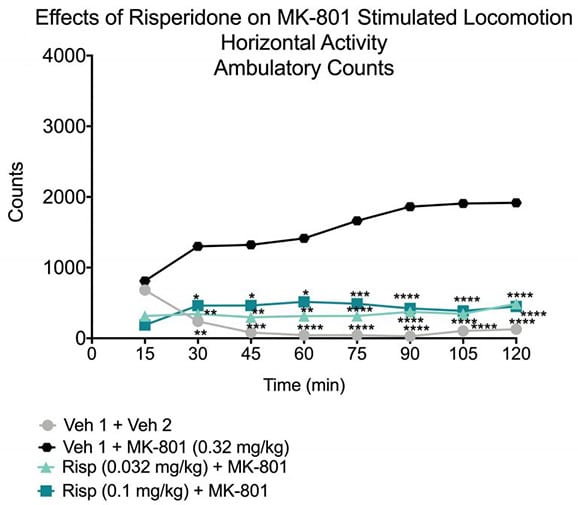Mouse Open Field Activity Test
Discover how Melior’s unique phenotypic screening platforms can uncover the untapped value of your candidate therapeutic
The open field test is a useful tool for assessing locomotor, psychological and other sensorimotor behavior in rodents. An automated system is in place that is capable of monitoring multiple locomotor and psychotherapeutic related parameters. Open field assessments are useful for determining how a drug affects not only normal locomotion, but other activities including exploratory behavior, stereotypic activity, rearing and time spent in pre-defined zones within the chamber. The chamber can be modified to examine anxiety-related behaviors, learning and memory functions and place-preference assays for addiction. Like the Irwin Observational Battery of tests, this assay can be used in conjunction with many of the assays within the Melior theraTRACE® platform.
The study summarized below illustrates how CNS-active drugs alter general activity in mice. First, MK-801, an NMDA antagonist, yields a dose-dependent increase in locomotor activity. Then, risperidone, a catecholamine antagonist, in combination with MK-801, blocks the hyper-locomotor activity otherwise caused by MK-801.
Ready to get started or looking for a custom model?
Contact us today for more information about our bespoke research models and to discuss how we can help you answer your unique research questions.
Part I: MK-801 induced hyperactivity

Ambulatory Activity in habituated CD-1 male mice. MK-801-induced hyperactivity and significantly increased ambulatory counts over time at 0.178 mg/kg and 0.32 mg/kg in mice. Data are mean values; *p<0.05, **p<0.01, ****p<0.0001 versus Vehicle (N=8).
Total distance traveled and ambulatory counts in habituated CD-1 male mice. MK-801 significantly increased total distance traveled and ambulatory counts at 0.178 mg/kg and 0.32 mg/kg. Data are mean values ±SEM; *p<0.05, ****p<0.0001 versus Vehicle (N=8).
Part II: Risperidone Antagonism of MK-801 induced hyperactivity
Ambulatory activity in habituated CD-1 male mice. Risperidone significantly attenuated MK-801 induced hyperactivity and ambulatory counts in MK-801 challenged mice. Data are mean values; *p<0.05, **p<0.01, ***p<0.001, ****p<0.0001 versus Vehicle/MK-801 group (N=8).
Total distance traveled and ambulatory counts in habituated CD-1 mice. Vehicle 1/ MK-801 (0.32 mg/kg)-treated mice exhibited hyperactivity in increased distance traveled and ambulatory counts. Risperidone (0.032 mg/kg and 0.1 mg/kg)/ MK-801-treated mice exhibited significantly attenuated distance traveled and ambulatory counts, similar to Vehicle 1/ Vehicle 2 treated mice. Data are mean ± SEM; ***p<0.0001, ****p<0.0001 compared to Vehicle 1/ MK-801 group (N=8).



